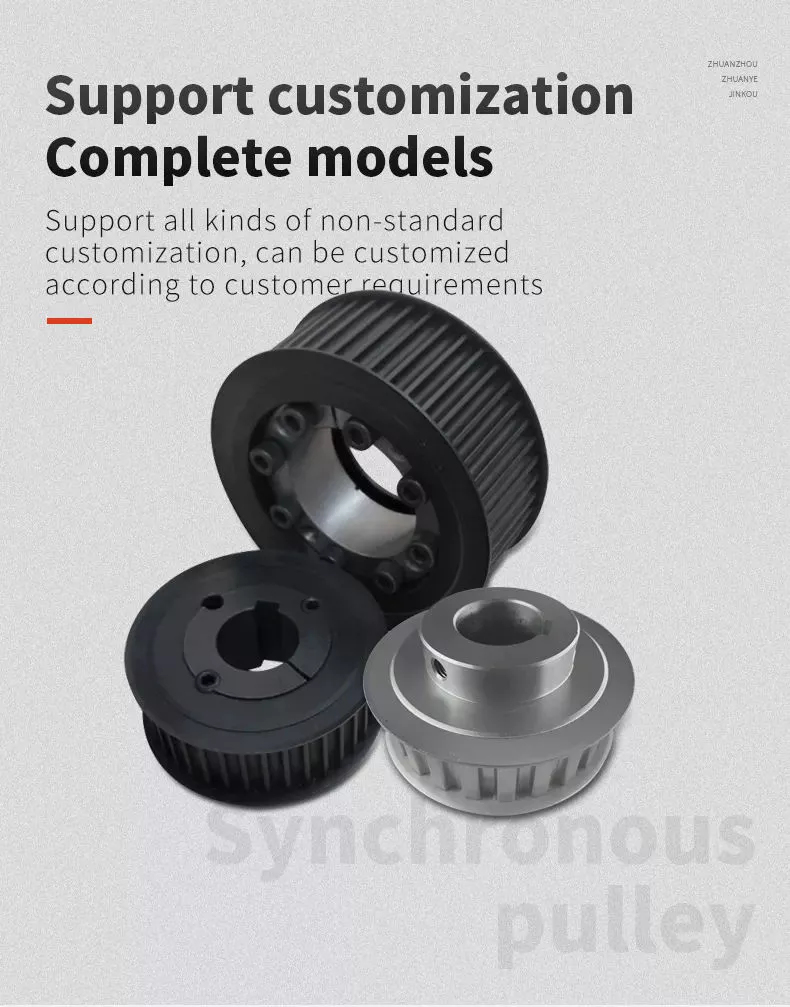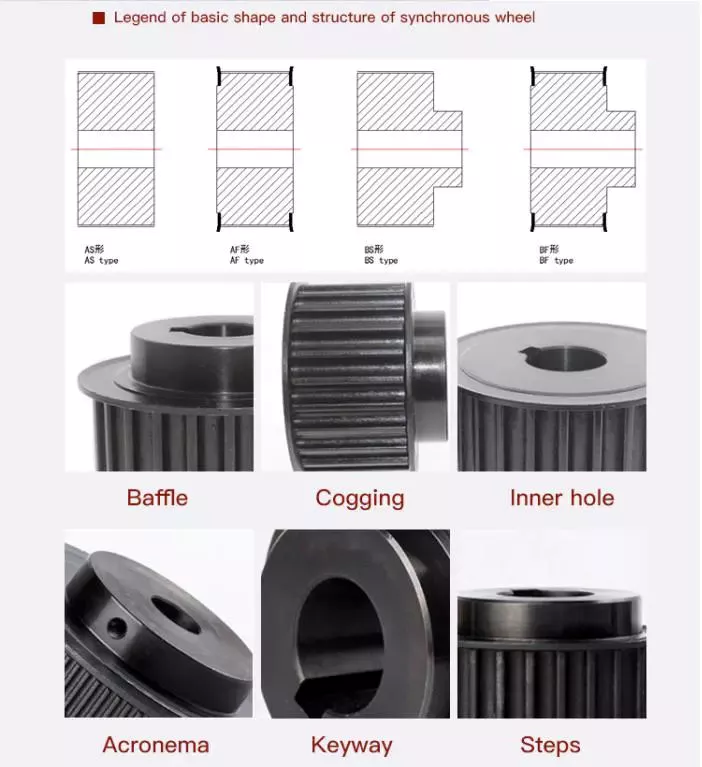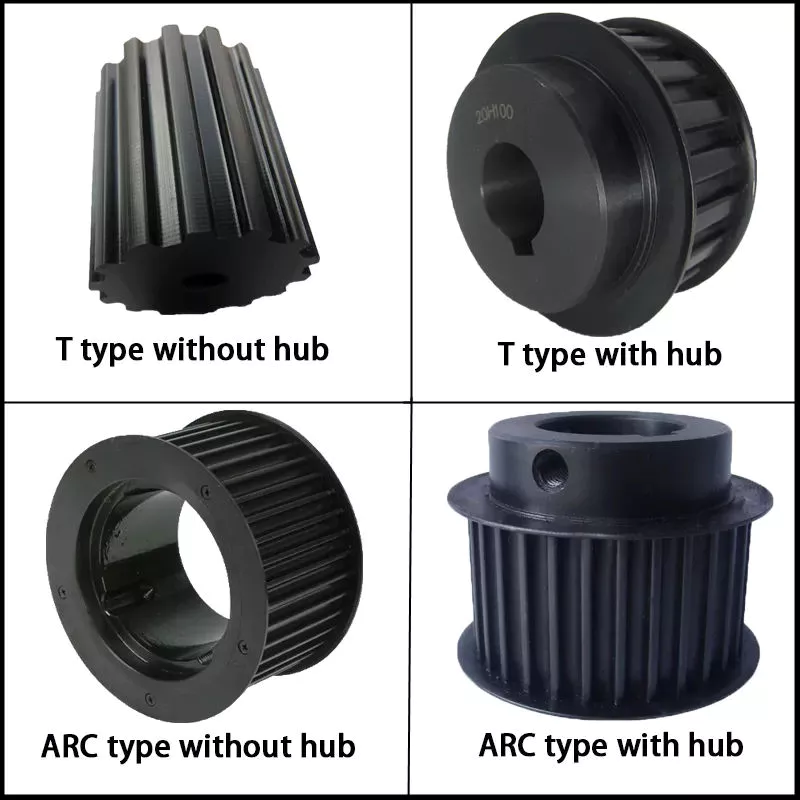Productomschrijving
Manufacturer of mining used belt conveyor idler drum pulley
Huayue Conveyor Pulley Specification:
1. Pulley Diameter: 250-1800mm.
2. Belt width: 300mm to 2400mm.
3. Length: Depend on the belt width.
4. Welding: Carbon dioxide arc welding, argon arc welding, electrode welding etc.; In accordance with AWS standard or substitute welding standard
5. Lagging: Cold lagging; Hot vulcanized lagging, ceramic lagging
6. Pulley tube material: Q235 seamless carbon steel.
7. Professional pulley production line.
8. Professional designing and inspection team.
9. Certification: ISO, BV, etc
Type of Conveyor Pulley:
Conveyor tail pulley
Conveyor head pulley
Conveyor rubber lagging pulley
Conveyor steel pulley
Conveyor driving pulley
Conveyor turnaround pulley
Pattern conveyor pulley
Conveyor pulley
Rubber conveyor pulley
Head pulley etc.
Conveyor Head Tail pulley:
Head pulley can be divided into driving pulley (head pulley) and thurn about pulley (tail pulley), driving pulley is the main part for transmitting the power: Smooth surface and rubber surface, and rubber surface can be classified into smooth rubber surface, herringbone rubber surface and CHINAMFG rubber surface to meet different technical requirements. Averting pulley can be classified into smooth rubber surface and smooth steel surface.
Construction
All the pulley adopt integrated bearing housing which is lubricated and filled with grease and has 2 kinds: Iron casting and steel casting, the shaft is made of 45#steel, the shell adopt weld assembly.
Our best quality based on:
Manufacturer
Experience in Cooperate with Fortune 500 Companies
Professional Engineering Capability
Stable Quality
Reasonable Price
Small Orders Accepted
Continuous Improvements
High Product Performance
Prompt Delivery
Professional Service
For more details, please inquiry us!
Polyester conveyor belt, (EP)
Nylon conveyor belt, (NN)
Cotton conveyor belt, (CC)
Sidewall conveyor belt (SW)
Steel Cord conveyor belt ( ST )
Chevron conveyor belt, (C5 C10 and C15)
Oil Resistance conveyor belt, (OR and MOR)
Hot Resistance conveyor belt, (HR)
Fire Resistance conveyor belt, (FR/PVC/PVG)
Heat Resistance conveyor belt, (HR/ FR)
Cold Resistance conveyor belts, (CR)
Pattern conveyor belt ( 30+ Moulds)
Metal Mesh conveyor belt (Heat resistant temp until 800c)
Endless belts
Conveyor roller, idler
Conveyor Pulley, frame, bracket etc
| Type | Belt width (mm) | Standard Diameter(mm) | Length (mm) |
| Drive Head Pulley | 500 | 500 | Length of the pulley depends on the belt width of the conveyor |
| 650 | 500, 630 | ||
| 800 | 500, 630, 800 | ||
| 1000 | 630, 800, 1000 | ||
| 1200 | 630, 800, 1000 | ||
| 1400 | 800, 1000 | ||
| Tail Pulley | 500 | 250, 315, 400, 500 | |
| 650 | 250, 315, 400, 500 | ||
| 800 | 250, 315, 400, 500, 630, 800, 1000 | ||
| 1000 | 250, 315, 400, 500, 630, 800, 1000 | ||
| 1200 | 250, 315, 400, 500, 630, 800, 1000 | ||
| 1400 | 250, 315, 400, 500, 630, 800, 1000 |
/* March 10, 2571 17:59:20 */!function(){function s(e,r){var a,o={};try{e&&e.split(“,”).forEach(function(e,t){e&&(a=e.match(/(.*?):(.*)$/))&&1
| Type: | Handling Machinery |
|---|---|
| Materiaal: | 45# Steel, Rubber and etc |
| Color: | Beschikbaar |
| Certificaat: | ISO9001, SGS, Bureau Veritas |
| Sollicitatie: | Coal Mining Industry, Cement |
| Handelswijze: | SKF, FAG, NSK, NTN, Hrb etc |
| Voorbeelden: |
US$ 200/Piece
1 stuk (min. bestelling) | |
|---|
| Aanpassing: |
Beschikbaar
| Aangepast verzoek |
|---|

How do pulleys affect the performance of fitness equipment?
Pulleys have a significant impact on the performance of fitness equipment by enabling the smooth and efficient operation of various exercise machines. Here's how pulleys affect the performance of fitness equipment:
1. Resistance Adjustment: Pulleys are often used in fitness equipment to provide adjustable resistance. By incorporating different-sized pulleys or using pulley systems with varying mechanical advantage, the resistance level can be adjusted to meet the user's desired intensity. This allows individuals to customize their workouts and progress in their fitness journey.
2. Cable Systems: Many fitness machines, such as cable machines and functional trainers, utilize pulleys in their cable systems. These pulleys guide the cables and allow for multi-directional movements, providing a wide range of exercise options. The smooth movement facilitated by pulleys enhances user comfort and ensures consistent resistance throughout the exercise motion.
3. Weight Stacks: Weight stack machines commonly found in gyms employ pulleys to create resistance. The weight stack is connected to the exercise handles or levers through a cable and a series of pulleys. As the user performs the exercise, the pulleys help distribute the load and maintain proper cable tension, resulting in smooth and controlled movements.
4. Functional Training: Pulleys play a crucial role in functional training equipment, such as suspension trainers or resistance bands. These systems often feature adjustable pulleys that allow users to target specific muscle groups and perform a wide variety of functional movements. The pulleys enable smooth and controlled resistance, enhancing overall workout effectiveness.
5. Mechanical Advantage: Pulley systems can provide mechanical advantage in fitness equipment, making exercises more manageable and accessible. By utilizing pulleys with appropriate mechanical advantage, individuals can perform exercises that would otherwise require greater strength or effort. This feature is particularly beneficial for users with varying fitness levels or those recovering from injuries.
6. Smooth and Controlled Motion: Pulleys contribute to the smooth and controlled motion of fitness equipment. By reducing friction and providing proper cable alignment, pulleys ensure that the resistance is applied evenly throughout the exercise range of motion. This promotes fluid and natural movements, minimizing the risk of injury and maximizing the effectiveness of the exercise.
7. Durability and Safety: High-quality pulleys used in fitness equipment are designed to withstand the rigors of constant use and heavy loads. They are often made from durable materials and incorporate features such as sealed bearings to minimize maintenance and maximize safety. Reliable pulley systems contribute to the longevity and safety of fitness equipment.
Overall, pulleys are essential components in fitness equipment, influencing resistance adjustment, cable systems, weight stacks, functional training, mechanical advantage, motion quality, and equipment durability. They enhance the effectiveness, versatility, and user experience of fitness machines, allowing individuals to achieve their fitness goals and maintain an active and healthy lifestyle.

Welke rol spelen katrollen in de mijnbouw en de bouw?
Katrollen spelen een belangrijke rol in de mijnbouw- en bouwsector, waar ze in verschillende toepassingen worden gebruikt om zware werkzaamheden te vergemakkelijken, de veiligheid te verbeteren en de efficiëntie te verbeteren. Hier is een overzicht van de rol van katrollen in deze sectoren:
1. Transportsystemen:
In mining and construction, conveyor systems are extensively used to transport bulk materials, such as ores, rocks, gravel, and construction aggregates. Pulleys are integral components of conveyor systems, guiding and supporting the conveyor belts or chains. They help in maintaining tension, reducing friction, and ensuring smooth movement of materials over long distances. The pulleys used in these systems are designed to withstand high loads and harsh environmental conditions.
2. Hijs- en hefwerktuigen:
Katrollen zijn cruciaal in hijs- en hefapparatuur die wordt gebruikt in mijnbouw- en bouwactiviteiten. Kranen, lieren en hefsystemen bevatten vaak katrolopstellingen om mechanisch voordeel te bieden en de beweging van zware lasten te controleren. De katrollen, samen met touwen, kabels of kettingen, zorgen voor veilig en efficiënt heffen, laten zakken en positioneren van apparatuur, materialen en structuren op bouwplaatsen of in mijnbouwactiviteiten.
3. Staalkabelsystemen:
In de mijnbouw en de bouw worden staalkabels veelvuldig gebruikt voor verschillende toepassingen, waaronder het vervoeren, slepen en tillen van zware lasten. Katrollen, ook wel bekend als schijven, worden gebruikt in staalkabelsystemen om de staalkabels te geleiden en om te leiden. De schijven helpen bij het handhaven van een goede uitlijning, verminderen slijtage en zorgen voor een efficiënte krachtoverbrenging. Ze worden veel gebruikt in toepassingen zoals kranen, liften en staalkabeltakels.
4. Breker- en zeefapparatuur:
In de mijnbouw- en bouwsector worden katrollen gebruikt in breek- en zeefapparatuur. In brekers worden katrollen bijvoorbeeld gebruikt om de roterende beweging van de kaken of kegels van de breker aan te drijven, waardoor grote rotsen of ertsen tot kleinere formaten kunnen worden verbrijzeld. Katrollen spelen ook een rol bij trillende zeven, en helpen bij het genereren van de nodige trillingen die materialen scheiden en classificeren op basis van grootte.
5. Grondverzet- en graafmaterieel:
Katrollen worden verwerkt in grondverzet- en graafapparatuur in mijnbouw- en bouwtoepassingen. Bijvoorbeeld, in graafmachines of draglinemachines worden katrollen gebruikt in de kabelsystemen die de beweging van de bak of schop regelen. De katrollen helpen bij het verlengen of intrekken van de kabels, wat zorgt voor efficiënt graven, laden en materiaaltransport.
6. Spanning en uitlijning:
In mijnbouw- en bouwactiviteiten worden katrollen gebruikt voor het spannen en uitlijnen. Spanrollen zorgen voor het goed spannen van riemen, touwen of kabels, optimaliseren de krachtoverbrenging en voorkomen slippen. Uitlijnpoelies worden gebruikt om de juiste uitlijning van riemen of kettingen te behouden, slijtage te verminderen, trillingen te minimaliseren en de levensduur van de componenten te verlengen.
Samenvattend spelen katrollen een cruciale rol in de mijnbouw- en bouwsector, en dragen ze bij aan materiaalbehandeling, hef- en hijswerkzaamheden, staalkabelsystemen, breek- en zeefapparatuur, grondverzet- en graafmachines en span- en uitlijntoepassingen. Hun gebruik verbetert de veiligheid, verbetert de efficiëntie en maakt het mogelijk om zware taken uit te voeren in deze veeleisende industrieën.

What materials are typically used to manufacture pulleys?
Pulleys are manufactured using a variety of materials, depending on the specific application and requirements. Here are some of the materials that are typically used to manufacture pulleys:
1. Metal Alloys: Metal alloys such as steel and cast iron are commonly used to manufacture pulleys. Steel pulleys offer excellent strength, durability, and resistance to wear and corrosion. Cast iron pulleys are known for their high strength and resistance to impact and shock loads. Metal alloys are preferred in heavy-duty applications where strength and durability are critical.
2. Aluminum: Aluminum is widely used in pulley manufacturing due to its lightweight nature and corrosion resistance. Aluminum pulleys are commonly used in applications that require reduced weight, such as automotive engines, aircraft components, and light-duty machinery. They offer good strength-to-weight ratio and are suitable for applications where weight reduction is a priority.
3. Plastic: Various types of plastics, including nylon, polyurethane, and high-density polyethylene (HDPE), are used to manufacture pulleys. Plastic pulleys are lightweight, corrosion-resistant, and offer good resistance to wear and abrasion. They are commonly used in applications where noise reduction, chemical resistance, or non-conductive properties are required. Plastic pulleys are frequently used in conveyor systems, packaging machinery, and small-scale equipment.
4. Composite Materials: Composite materials, such as fiberglass-reinforced plastic (FRP) and carbon fiber-reinforced polymer (CFRP), are utilized in the manufacturing of pulleys. These materials offer high strength-to-weight ratios, excellent resistance to corrosion, and good fatigue resistance. Composite pulleys are commonly used in industries such as aerospace, marine, and sports equipment, where lightweight components with exceptional strength are required.
5. Ceramics: In certain specialized applications, pulleys made of ceramics like aluminum oxide (alumina) or silicon nitride are used. Ceramic pulleys offer exceptional hardness, high temperature resistance, and excellent wear resistance. They are primarily used in industries such as semiconductor manufacturing, where extreme precision, chemical resistance, and resistance to high temperatures are crucial.
It's important to note that the choice of material for pulley manufacturing depends on factors such as load capacity, operating conditions, environmental factors, and cost considerations. Manufacturers select materials that provide the necessary properties to meet the specific requirements of the application while considering factors such as strength, durability, weight, and cost.


redacteur door CX
2023-12-18
